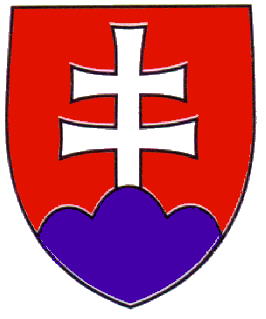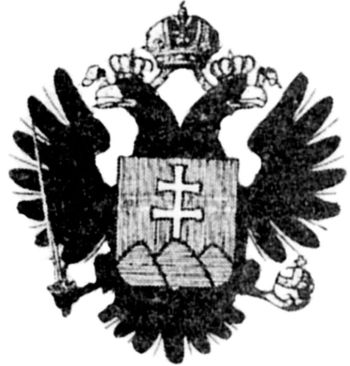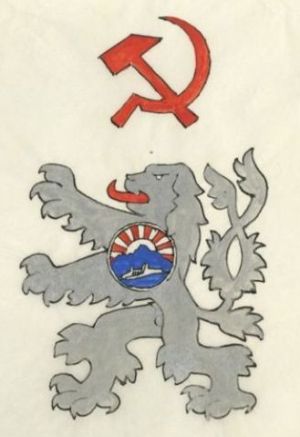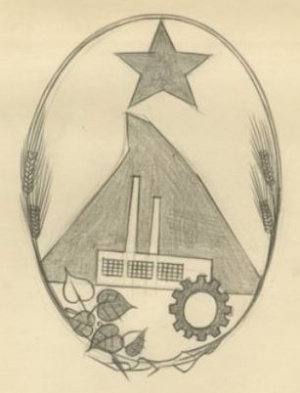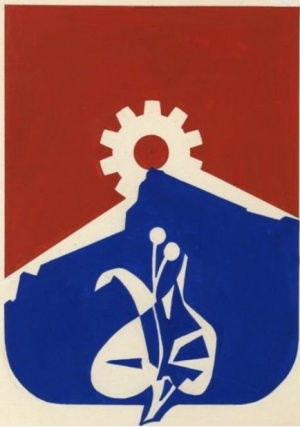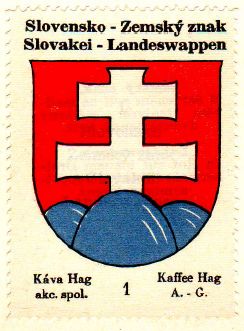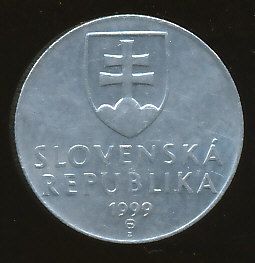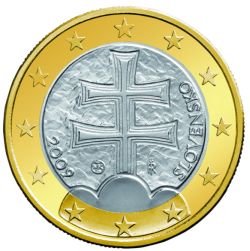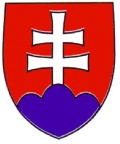National Arms of Slovakia: Difference between revisions
Knorrepoes (talk | contribs) m (Text replacement - "{{media}} Literature : Kartous and Vrteľ" to "'''Literature''': Kartous and Vrteľ {{media}}") |
Knorrepoes (talk | contribs) No edit summary |
||
| (2 intermediate revisions by the same user not shown) | |||
| Line 1: | Line 1: | ||
'''NATIONAL COAT OF ARMS OF SLOVAKIA''' | '''NATIONAL COAT OF ARMS OF SLOVAKIA''' | ||
| Line 51: | Line 49: | ||
|} | |} | ||
[[Civic Heraldry Literature - Czechoslovakia, Czechia and Slovakia|'''Literature''']]: Kartous and Vrteľ; https://spectator.sme.sk/c/20460586/howthenationalemblemappearedincludingsofarsecretcommunismdesigns. | |||
html | |||
{{sk}} | |||
{{media}} | |||
{{media}} | |||
[[Category:Slovakia]] | [[Category:Slovakia]] | ||
[[Category:National Arms]] | [[Category:National Arms]] | ||
[[Category:Granted 1993]] | [[Category:Granted 1993]] | ||
Latest revision as of 10:36, 18 October 2023
NATIONAL COAT OF ARMS OF SLOVAKIA
Official blazon
Štátny znak Slovenskej republiky tvorí na červenom ranogotickom štíte dvojitý strieborný kríž, vztýčený na strednom vyvýšenom vŕšku modrého trojvršia. Driek a ramená kríža sú na koncoch rozšírené a vhĺbené, vrchy sú oblé.
Origin/meaning
The arms were officially adopted on January 1, 1993.
The arms of Slovakia show a double cross on a triple mountain.
The double cross is a symbol of Christianity and the hills represent the three symbolic mountain ranges: Tatra, Fatra and Mátra (the last now partly in Hungary).
The double cross probably arrived in present day Slovakia by the Byzantine missionaries St. Cyril and Method. The first official use dates from the arms of the Hungarian King Bela III (ruled 1173-96), who used a silver double cross on a red shield. Already in the 14th century the cross was used standing on a triple mountain.
| The arms on a seal from 1305 from Wenceslaus III of Bohemia, as King of Slovakia |
The double cross was mainly seen as the symbol for the Northern part of the Hungarian Kingdom, which is now Slovakia and several towns in Slovakia were granted arms with a double cross during the 14th-16th century (for example Nitra, Skalica and Zvolen).
In the 19th century, when the struggle for Slovak independence developed, the green hills, as used in the Hungarian arms were replaced with blue hills and the meaning was changed to the mountain ranges, which were considered the Slovak lands. It was first used in 1848 by the Slovak National Association in Vienna.
| The seal of the Slovak National Association |
Proposal of arms for the Slovak Lands, 1861 |
In 1918 Slovakia became part of the new Czechoslovak Republic. In the new arms of Czechoslovakia, Slovakia was represented by the cross and blue hills. See also National arms of Czechoslovakia.
During the first Slovak Republic (1939-1945) the arms became the national arms. In 1945 when Czechoslovkia was restored, Slovakia was represented first by the old arms, and from 1961-1989 by a flame. Several other designs were proposed for the arms of Slovakia in 1960:
| Design 1960 (Štefan Bednár) |
Design 1960 (Vincent Hložník) |
| Design 1960 (Július Lörinc) |
After the independence in 1993, the now historical arms were restored.
The use of the arms:
| The arms in the Coffee Hag albums +/- 1930 | |
| The arms on a coin from 1999 |
The arms on a Slovak Euro coin |
Literature: Kartous and Vrteľ; https://spectator.sme.sk/c/20460586/howthenationalemblemappearedincludingsofarsecretcommunismdesigns. html
Slovakia heraldry portal
This page is part of the Slovakia heraldry portal |
Heraldry of the World |
|
Civic heraldry:
|
Other heraldry: |
Contact and Support
Partners:
Your logo here ?
Contact us
© since 1995, Heraldry of the World, Ralf Hartemink 
Index of the site
